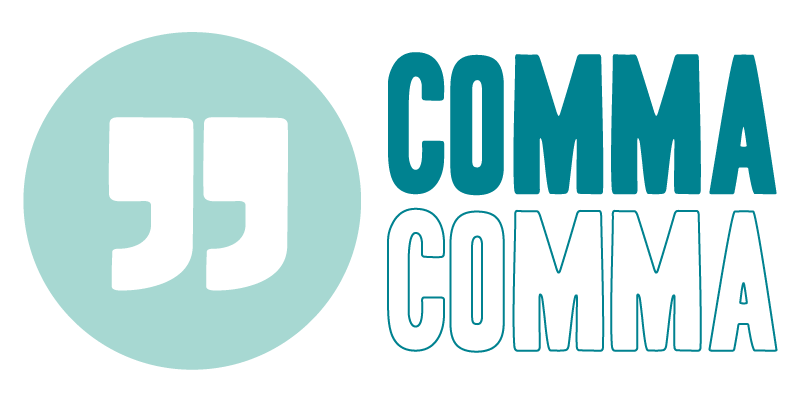Back in the days when we could network freely, this was one of the most common questions that solo or “small team” business owners would ask me.
But there isn’t a one-line answer. Plus the question focuses on the wrong problem.
The problem isn’t that you don’t know what to write. The problem is (usually) that you need to frame it differently.
It can feel like there’s a real urgency to just Getting An Email Out. Especially if you’ve built up a decent sized list, you haven’t emailed them in ages, and all the “gurus” are telling you, “There’s money in your list!”
There’s almost a sense of panic or desperation. And desperation is never the underlying emotion you want in something you’re sending to subscribers and customers.
So… what’s the answer?
Let’s start with a different question:
“What do you want to achieve through email?”
That’s a much better place to start, because it means you’re looking at the goals for your business, rather than thinking, “OMG, I have this email list that I’m not using, and I don’t know what to write, and they’ve probably all forgotten who I am anyway”.
Maybe you wouldn’t say “OMG”, but the rest of it!
(Side note. When I said “OMG” earlier this week – completely ironically – my nearly-teenage son told me, “OMG is so 2015”. Good to know my slightly sarcastic use of text speak is cutting edge!)
Right, back to what you want to achieve through email. And let’s get more specific. Usually your goals will include:
- Relationship building – so people get to know you, like you and trust you (it’s cliche, but true)
- Sales – so people take the next step – maybe they buy a product or entry-level service from you, sign up for a trial or demo, or book a call with you
- Engagement – so people reply to your email, or engage in a social media post, or recommend you.
That’s a lot. You can’t cram all of that into one email unless you want to overwhelm your audience. And overwhelm won’t encourage your readers to take action.
So where might you start with a list you haven’t emailed in a while?
First up, rather than thinking about this in terms of one email, let’s plan a short sequence of emails. Just four emails, which we’re going to call our “re-engagement sequence”.
We’re aiming to get people back on board after a gap in our communications. They chose to subscribe, but they might have forgotten why they did that. So let’s remind them with a stellar opening email.
The first rule of re-engagement is: you do not talk about re-engagement in the email itself.
And the second rule of re-engagement is: you DO NOT talk about re-engagement in the email itself. Just kidding – this isn’t Fight Club. The second rule of re-engagement is: you don’t apologise for not sending emails before now.
Why?
Because it can sound a little pathetic – as if you think people are waiting around for your emails. Now if you’re the world’s first Chief Content Officer, Ann Handley, who emails every two weeks without fail and has 31,000 faithful followers on her list, maybe you would apologise if you failed to deliver. But probably not.
An apology isn’t an interesting opener. So don’t waste valuable airtime talking about it. You want to find a more interesting way to hook your reader.
So this first email needs to deliver something of value. I’d open with a story. (The story-based format is popular for a reason. And that reason is, it’s effective.)
Tell a captivating tale. It could be something from your life or business, something you helped a client with, or even someone else’s story from a great book you read (make sure you credit them). And then transition into a useful take away. Which ideally relates in some way to how you help people or what you sell. In an ecommerce business you might want to lean more towards a story about a cool supplier, or a story that relates to sourcing products or the ethos behind your business – as long as it’s interesting.
Finish up by giving a taste of what’s to come in the next email – which we’ll cover in a moment.
And then in your PS you might want to include something easy for them to do. Come over and follow me/the business on <social channel you’re active on> to get <benefit of following you>. Get this fabulous guide I just wrote. Or hit reply and tell me whether you’d like to hear more from me on Curiousity-invoking Topic A or Curiosity-invoking Topic B.
Keep it simple, and accept that you might not get much of a response to this “first in a while” email. But you’re getting the conversation going again, and people will get a sense that you care about them.
So Email 1 has covered relationship building and engagement. Now for Email 2. Let’s double down on delivering value. You might want to send over an offer, or something that’s just for your list. This could be a product or online store-wide discount, a free workshop for subscribers only or a time-limited promo.
But Liz, surely it’s too soon to be selling?
I’d argue that it’s never too soon. It’s what you’re here for, and if you believe in your product or service, it makes sense to pitch it to people who – at some point – chose to hear from you. Tell them what’s great about it. Tell them what other people got out of it. And give them a chance to buy.
I’m not saying pitch them the most expensive thing you sell. We’re talking about something that isn’t going to take too much thinking about to make a decision. So it’s your “Shop shoes” button or your $95 / £75 offer, or a call to “Watch our 3-minute mini demo”.
After that, you can move back into sending your regular emails. These emails should take it in turns to hit all the bases when it comes to relationship building, sales and engagement. And that way you’re making friends and fans, rather than constantly selling.
At this point, you might be wondering: What happened to the third and fourth emails in the re-engagement sequence? Good spot!
Here’s a quick summary of what else you need to consider sending – including those last two emails (they don’t go to everyone).
Your final instructions for re-engagement
- Consider a re-send of Email 1 to anyone who hasn’t opened it within 3 days. Change the subject line, add a short intro along the lines of “I don’t think you saw this, so I’m whizzing it over again because I didn’t want you to miss out…” and try sending it at a different time of day.
- Consider only sending Email 2 to people who opened Email 1. Send another, different “story + value” email (Email 1b) to the “didn’t open any emails yet” crowd before you send over your offer (Email 2).
- For anyone who hasn’t opened a single email, send them Email 3 – a courtesy email to let them know you’ll be taking them off your list. And give them the option to click a link to save themselves, or click a link to unsubscribe. This is a must, because if someone isn’t opening, they’re affecting your list health, which makes it less likely your emails will get through to the people who are KEEN to hear from you. So you need to get rid of the non-openers.
I want to be clear that this isn’t the ONLY way to re-engage your list. Every business and every list is different, and if I was working with you, I’d do my research to come up with the best approach for your list and your specific audiences.
But if you just need to get it done, so you can get back into the rhythm of emailing your list, this is a straightforward strategy.
You need:
- Two stories
- A valuable take away from each story
- Something to engage people
- One offer
The emails:
- Email 1: Story + valuable point + PS to engage
- Re-send Email 1 after 3 days to anyone who didn’t open
- Email 1b: Story 2 + valuable point 2 + PS to engage 2 (only goes to people who haven’t opened anything yet)
Email 2: Send them an “easy decision” offer (only goes to people who’ve opened something) - Email 3: An “I’m unsubscribing you unless you save yourself” email (only goes to people who haven’t opened anything yet)
And Bob’s your uncle! (Or in my case, he’s my dad. But that has less of a ring to it.)
I haven’t given a cadence for these emails because it depends on your audience and usual sending frequency. But ideally I’d keep it punchy and aim to get the emails out over 9 days. Definitely no more than two weeks for the whole sequence. The only exception is if it’s holiday/vacation season – then you might want to allow a few extra days.
My final word on re-engagement is this: I forbid you to include the phrase “these unprecedented times” in any of the emails.
Your readers will thank you.
Photo credit: Adam Solomon on Unsplash

